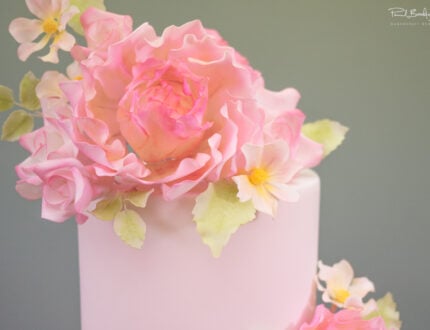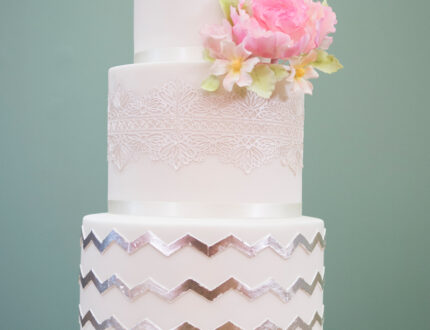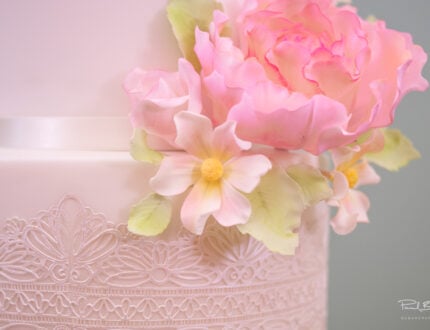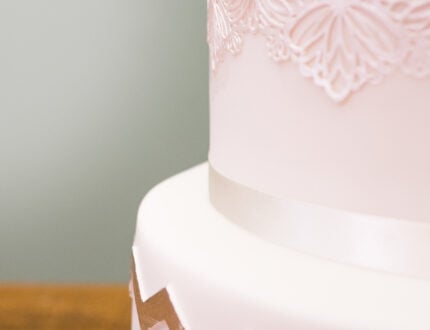Tutorial Preview
1. The Structure and Design
Short on time? You can watch this whole tutorial in just 16 minutes here.
In this lesson, Paul takes us through the flavours he will be using to create this beautiful wedding cake. Paul is going all out and using fruit cake, sponge cake and lemon cake. Not only that but there’s jam, buttercream and chocolate ganache too. That should make it very tasty, but all together would result in quite a heavy cake – for this reason, Paul decides to replace some of the cake with dummy cakes to avoid any transportation disasters.
2. Covering the Cake
3. Making the Peonies Part 1
4. Making the Roses Part 1
5. Making the Roses Part 2
6. Making the Daisies
7. Making the Peonies Part 2
8. Making the Chevron Design
9. Adding the Chevron Design
10. Filling the Joins and Adding the Silverleaf
11. Finishing the Chevron Design and Covering the Board
12. Adding the Second Tier and the Ribbon
13. Making and Adding the Cake Lace
Lets make some more pretty things! Paul has a lovely Claire Bowman Cake Lace mat which he used and there are a whole host of other designs that can be used too.
This is an incredibly satisfying process and one which requires only a little effort for beautiful results. Do your best not to get too distracted once you’ve put it in the oven as it is very easy to overheat, causing it to go brittle and crack when taking it out of the mat. So make sure to set your timer to 10 minutes.
14. Adding the Rest of the Cake Lace
15. Dusting the Roses
16. Dusting the Peonies and the Daisies
17. Dusting the Leaves and Glazing the Flowers
18. Arranging the Flowers on the Cake
We are on to the final stage! This requires an artistic eye as well as a bit of forward planning. As always, don’t feel you have to do exactly what Paul does – have fun but do your best to map it all out before committing to adding anything as you don’t want to make unwanted holes in your cake! Less is definitely more here.
19. Other Ideas
20. Fast Forward
There are some techniques that are assumed knowledge and are therefore not listed as lessons within this tutorial, but they can be found by following the links to Icing Round Cakes, Ganaching Cakes and Stacking Cakes which are within our Beginners section.
We would love to see your take on this cake, so hop on over to our Facebook Page and share your snaps with us!





